Construction sites and buried animals
The topic of construction sites and buried animals mainly concerns animal protection, but occasionally also nature conservation. Construction sites often provide shelter for amphibians and other animals. Unfortunately, all these animals are threatened with death by burial. The topic of construction sites and buried animals is so far mainly among hedgehog lovers known.
Dimpled Membran
Dimpled membranes are or will be laid along the house (cf. Figures 1 – 3). The purpose of the dimpled membranes is to protect the basement from moisture and the foundation walls from the soil. Amphibians like to seek shelter and protection from drying out under the dimpled membranes. The mild climate around the house further enhances the attractiveness of these shelters.
A nature conservation colleage had rescued numerous amphibians under this dimpled membrane (cf. Figure 1). Unfortunately, she didn’t document the rescue operation photographically.

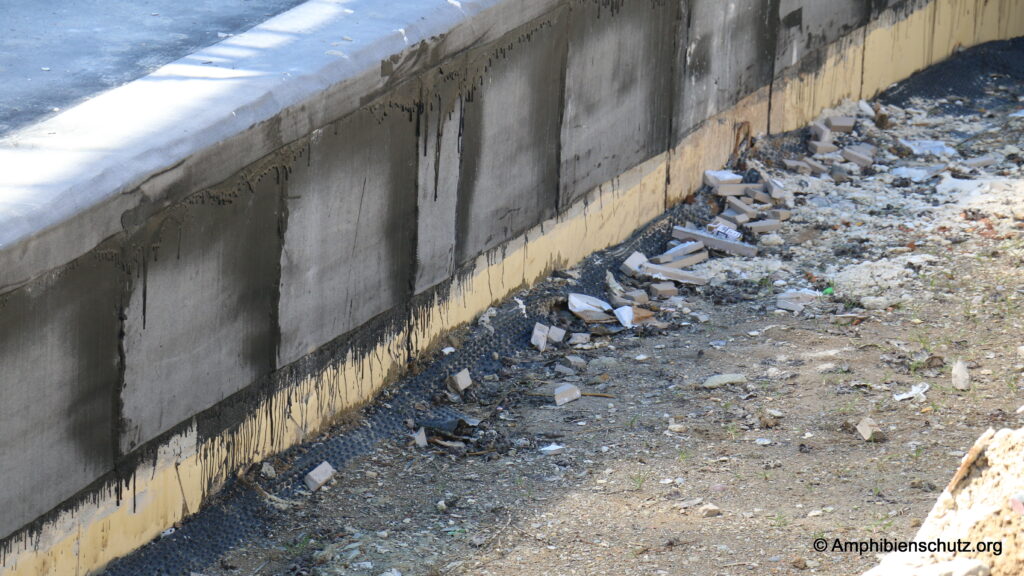
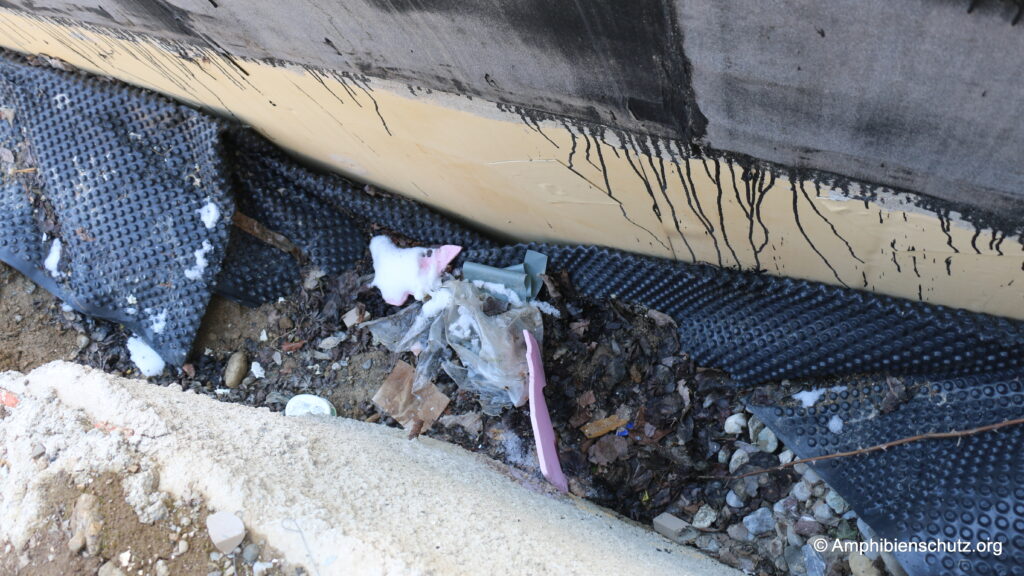
Holes around the steel beam
The holes around the steel beams are also attractive for the amphibians and other animals. These holes have a milder and more moisture climate and strongly attract the amphibians (cf. Figures 4 – 8).
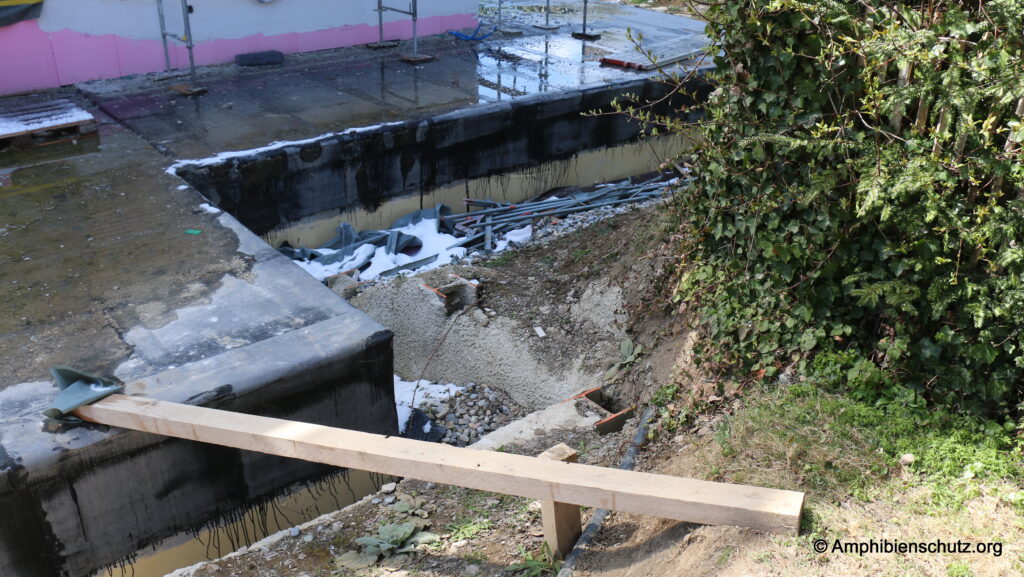
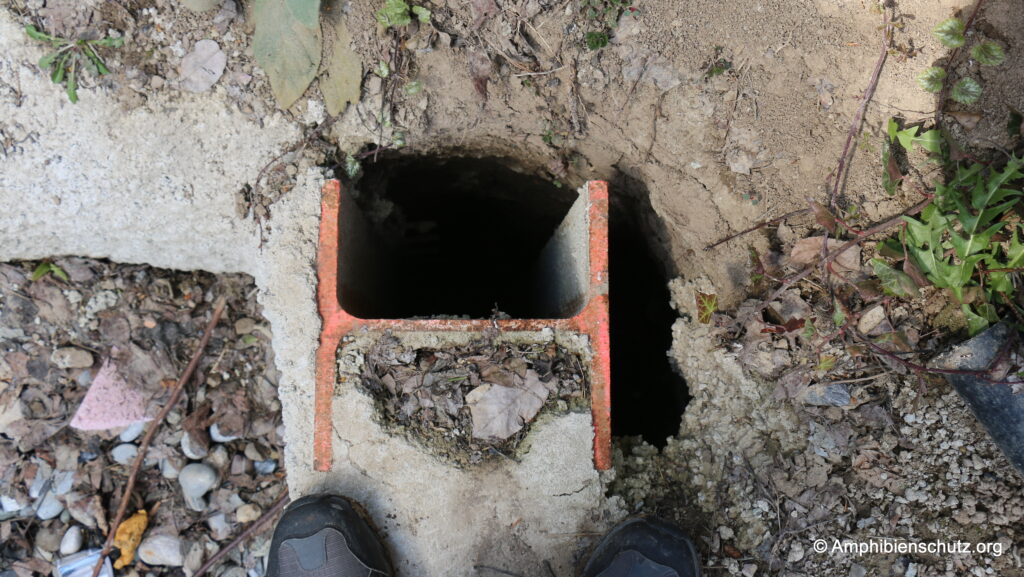


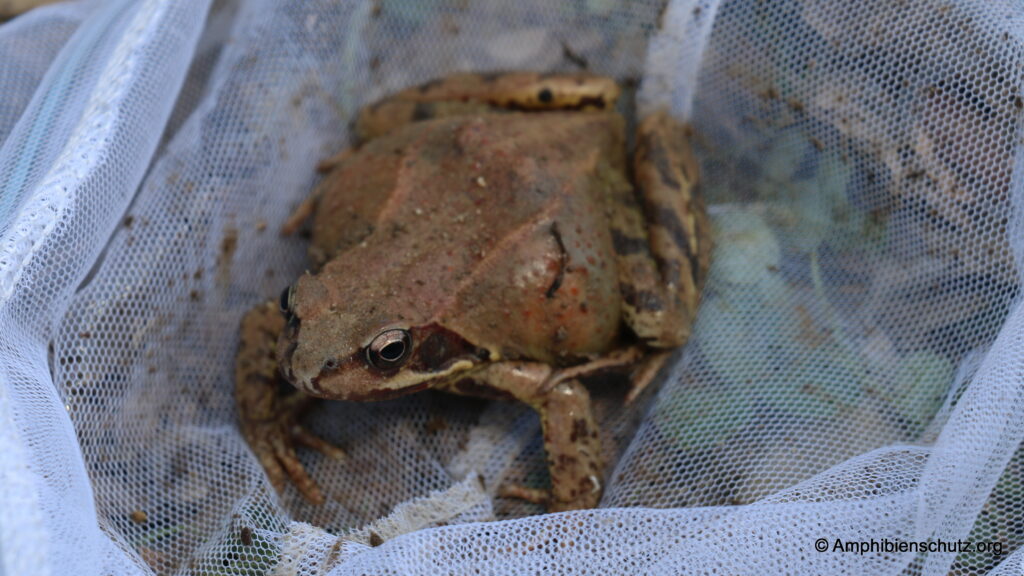
Inadequate construction site safety
During pipe-laying, excavation work and construction work in general, numerous animals are repeatedly buried alive or killed in some other way. The only purpose of construction site protection is to protect people. The construction site safety barriers are no obstacle for most animals (cf. Figure 9).
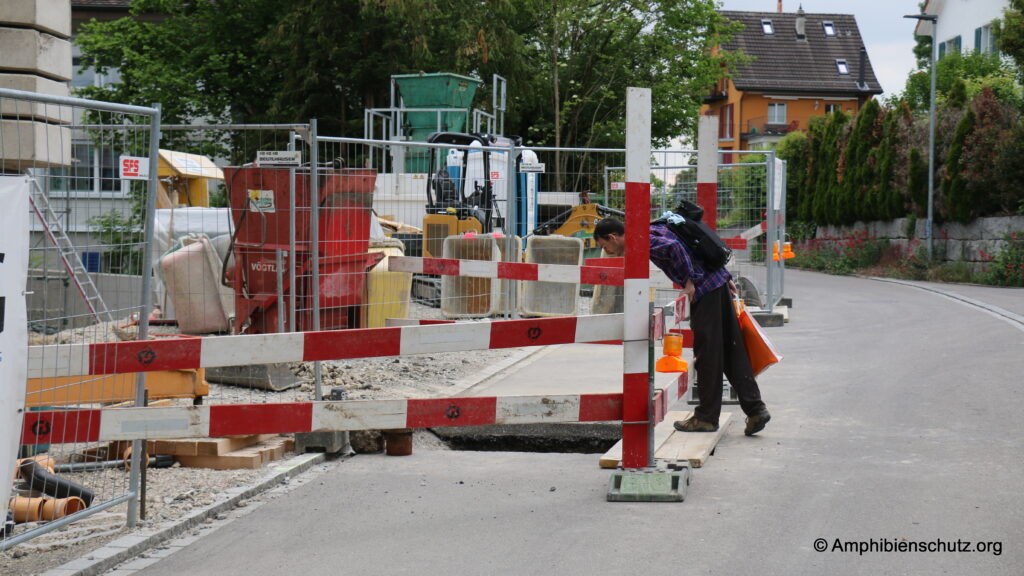
After the construction work, the pit is filled in. The workers are not paid to look after the animals or to rescue the animals from the pit, so the animals remain inside and are simply buried by default (cf. Figure 10).

Hedgehogs and construction sites
Besides amphibians, hedgehogs and other animals may also be affected. There are detection dogs that have been specialized to detect hedgehogs on construction sites and on areas that are to be cleared. The detection dogs are especially useful around crevices under the house, and endoscope cameras are also used (cf. Figures 11 and 12). Unfortunately, such detection dogs are hardly used around construction sites. In principle, these dogs would also be able to detect amphibians.
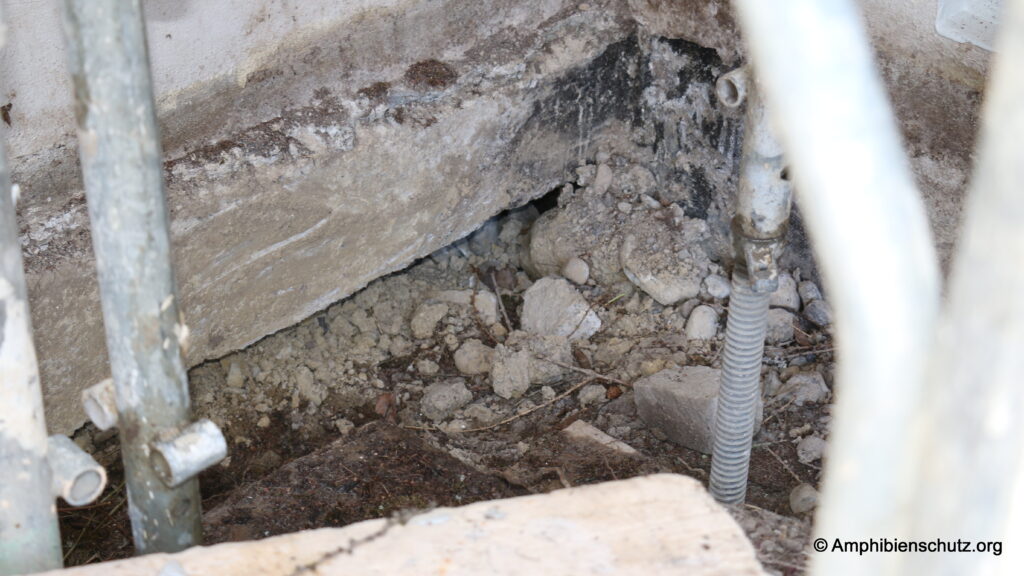

© spuerhunde-team.ch
Conclusion:
The law does not care about animals when it comes to construction site safety. The problem must be addressed at the legislative level. It is primarily about animal welfare and ethics.
